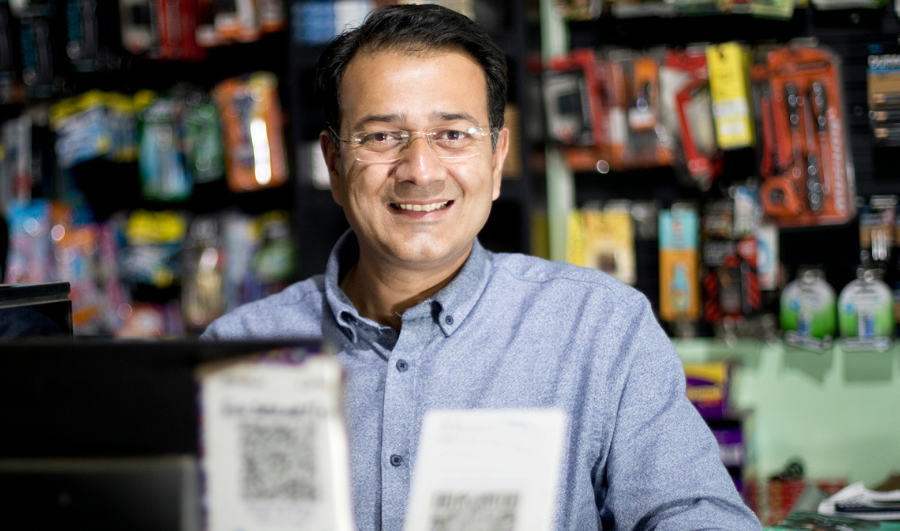Most business payments have moved online without a physical interface. Let us understand the difference between a payment gateway and processor.
As the world is shifting online, the role of e-commerce is increasing. Most businesses have an online presence to stay relevant, especially in the B2C segment. With businesses shifting online, payments have also moved online without any physical interface. Here is where the need for a payment gateway and payment processor arises. Let’s see what they are and the difference between payment gateway vs processor.
Critical Stakeholders for Online Payments
Following are the players involved in an online payment transaction:
- The Customer begins with purchasing a product or service. A customer initiates the payment process.
- The Merchant is the provider of goods or services against receipt of payment from the customer.
- The Issuing Bank is the bank hosting the customer’s bank account. Usually, the issuing bank provides the customer with a payment card, and when any transaction is undertaken, the issuing bank settles the payment with the acquiring bank.
- The Acquiring Bank hosts the merchant’s bank account. The acquiring bank receives the payment initiated by the customer to the merchant.
A Typical Payment Process
The following is the payment process in case of an online transaction:
- A customer buys a product or service and initiates the payment.
- The payment gets processed.
- The issuing bank deducts the payment amount from the customer’s bank account.
- The acquiring bank transfers the money to the merchant’s bank account.
The Inside Story!
While the above process seems quick and simple, it’s not that straightforward. A lot happens after a customer initiates the transaction and the merchant receives the payment. Here, the payment gateway and the payment processor come into the picture. Let’s understand the payment gateway and payment processor and why they are intricate in an online payment transaction.
What is a Payment Gateway?
The payment gateway is similar to a credit card terminal used for the point-of-sale transaction. However, it is designed specifically for online payment transactions, more commonly known as Card Not Present (CNP). The payment gateway is the last checkpoint where a customer enters the payment details of their purchase.
How Does a Payment Gateway Work?
After a customer finalises the product and proceeds for payment, they enter the credentials for the cost. The payment gateway encrypts the customer’s details and sends them to the issuing bank. Here, the data is decrypted in the format usable by the issuing bank, where it authenticates the details submitted by the customer. Once the details are verified, the payment processor delivers the information using secure encryption. The most commonly used encryption is Secure Socket Layer (SSL).
What is a Payment Processor?
A payment processor works at the back-end, communicating the transaction details between the customer, merchant, issuing bank, acquiring bank, and the payment gateway.
How Does the Payment Gateway Work?
The payment gateway sends a customer’s encrypted data to the acquiring bank. The acquiring bank then issues a request to the issuing bank to verify the account holder’s/cardholder’s identity and the transaction’s validity. The issuing bank communicates the transaction’s approval or denial to the acquiring bank, further directed towards the payment gateway.
The payment gateway intimates the customer of the transaction’s approval or denial. If the transaction is approved, the customer proceeds with the checkout process, completing the transaction. Once the transaction is finalised, the payment processor sends the information to the issuing bank to transfer the funds to the acquiring bank in the merchant’s account.
Payment Gateway and Payment Processor – Difference
We understood payment gateway vs payment processor vs merchant account. It is pertinent to note that though the payment gateway and the payment processor sound similar, they both are entirely different. Following are the major differences between the payment gateway and payment processor:
| Payment Gateway | Payment Processor |
| The payment gateway acts as the last checkpoint whereby the customer enters banking information to execute payment transactions encrypted and secured by the payment gateway. | The payment processor is typically a financial institution that handles the back-end after the transaction is executed and ensures that the merchant obtains the funds. |
| The payment gateway interacts with the customer. | The payment processor ensures the transmission of information and interaction between the customer, merchant, issuing bank, acquiring bank, and payment gateway. |
| Payment gateways are commonly used for e-commerce and online payment transactions. | Payment processors are used for all types of payment transactions. |
Whether both Payment Gateway and Payment Processor Required?
Most people ask whether both payment gateway and payment processor for businesses are required. In the case of offline transactions that take place in brick-and-mortar stores, only a payment processor is required as credit card terminals act as a payment gateway. They authenticate the card with the help of EMV chips, while the payment processor takes care of the back-end of the transaction.
However, both a payment gateway and a payment processor are required for online payment transactions. A payment gateway acts as the beginning and the end of a transaction. From being the last point where the customer enters the payment details to communicating the transaction’s acceptance or denial is the role of the payment gateway. It authenticates the details without the use of EMV chips. Here also, the payment processor is responsible for taking care of the back-end of the transaction.
Nowadays, payment gateway technology has evolved with the changing landscape.
Modern payment gateways can also handle payment processing across many more channels and devices apart from e-commerce transactions. Once integrated with third-party CRM and ERP software, it can remove the need to manually capture the payment and sales data.
Know more – How to Choose The Best Payment Gateway for Your Business?
How does PayU Transform the Payment Landscape?
PayU caters to the payment needs of both online and offline businesses. It ensures the best transaction success rate, easy gateway integration with your website or mobile phone, a 24*7 running gateway with no downtime, and great value for money. Further, the BharatQR setup ensures payment acceptance through all payment modes.
Whether you are a freelancer, enterprise, or startup having an omnichannel presence, PayU is the solution to all your payment needs.
FAQs
It depends upon the payment gateways you select. You should select the payment gateway that is compatible with all the payment methods.
While you make your transactions digitally, you may experience glitches sometimes. However, PayU customer support ensures that all your queries are resolved on a priority basis to have the best customer experience and smooth digital transactions.
A payment gateway allows you to accept credit card payments by transfer of amount between the payment processor and your merchant account. On the other hand, a virtual terminal directly turns your computer into a credit card terminal. Therefore, it allows you to process your payments directly from the web browsers.
Whether it’s about key-in cards, swipe or process checks, everything can be done through the computer via a payment gateway. Payment Gateways also offers the features of billing and reporting. Also, activating a recurring billing allows you to store your customer’s information and automatically charge them on a recurring basis.





